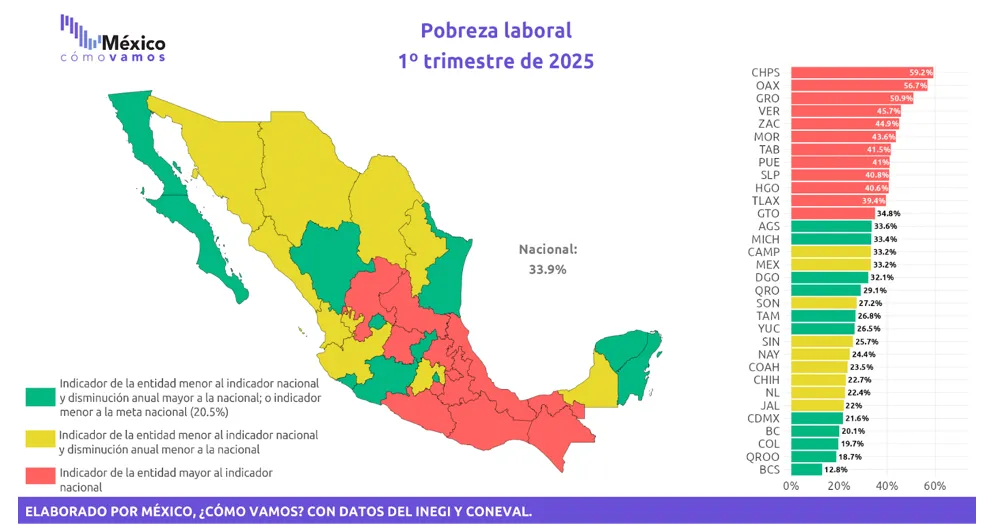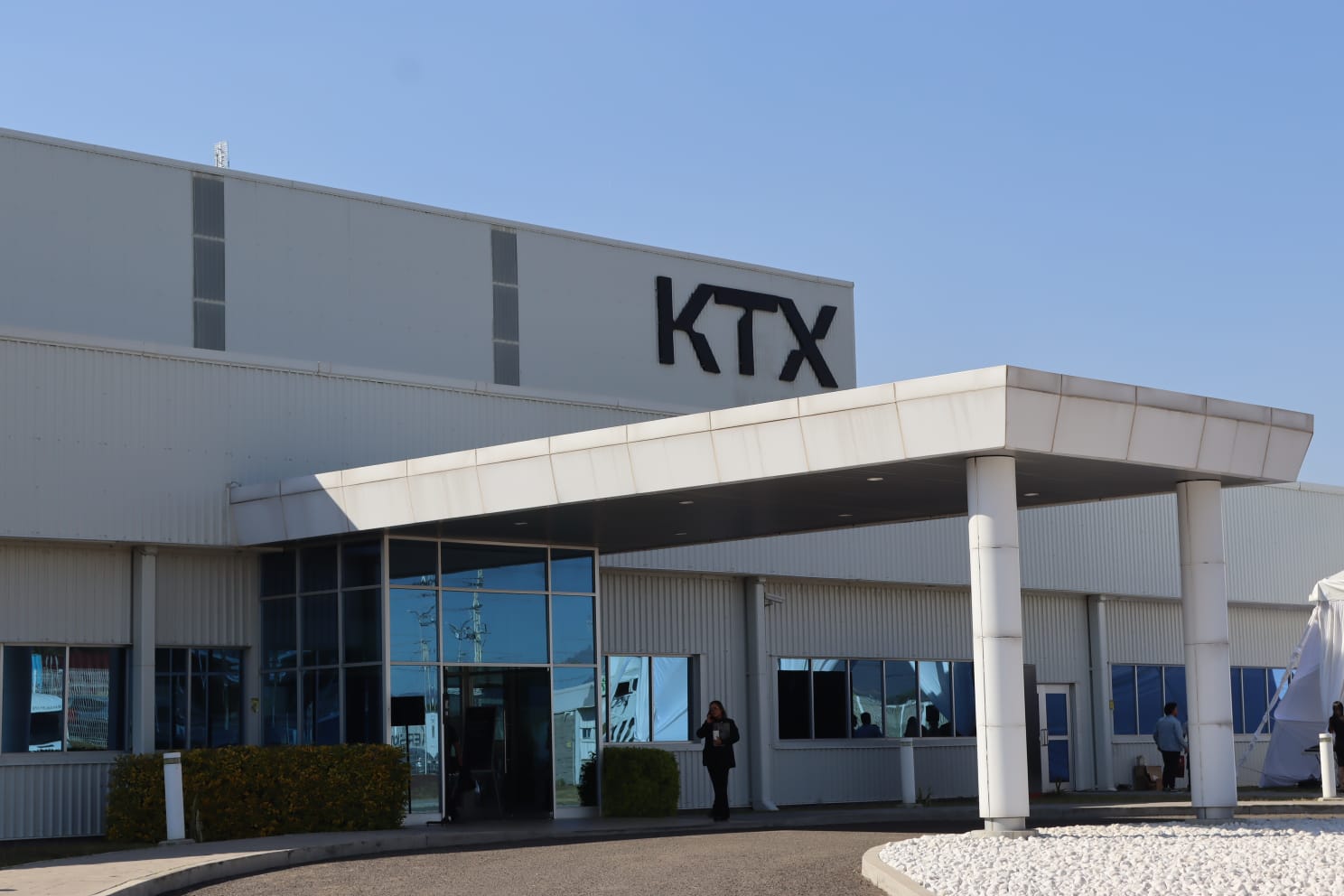Labor Poverty and Informal Markets

Discover insights about labor poverty informal markets and their relevance in today's dynamic business environment.
The Economic Traffic Light for state-level labor poverty **is green in 11 entities, **as they have poverty levels lower than the national level (35.1%) and the change in the percentage of the population in this situation performed better than the national average, or they directly meet the goal of presenting a level lower than 20.5%.
One-third of the employed population in Aguascalientes experiences labor poverty in the 1st quarter of 2025. The Aguascalientes entity is between 44% for Zacatecas and 22% for Jalisco. Labor poverty is more prevalent among women than among men, as is informality in their occupation.
For every 100 men in labor poverty in Aguascalientes, there are 117 women; paradoxically, the highest indicator is in Jalisco, the national leader with 127 women in poverty for every 100 men, curiously having a lower rate than the national average of 113, compared to neighboring Zacatecas with only 111 per 100.
Informality and Labor Poverty1296
Informality and labor poverty are related. The northern region achieves the lowest indicators in both variables, particularly in Baja California, Baja California Sur, Chihuahua, Coahuila, and Nuevo León. At the other extreme, with high levels of poverty and informality, are Chiapas, Oaxaca, and Guerrero. Aguascalientes and Querétaro are the lowest in the region. Jalisco and Mexico City have intermediate positions. The states of Guanajuato, San Luis Potosí, and Zacatecas paint their situation in preventive and red on the national board.
Population That Cannot Afford the Sum of the Food and Non-food Basket1877
When comparing the cost of the food and non-food basket with the per capita labor income, México, ¿Cómo Vamos? estimated that, in the first quarter of 2025, 64.3% of the national population does not have sufficient income to acquire the sum of the food and non-food baskets. In two states, the percentage of the population exceeds 80%, with Chiapas being the entity with the highest proportion of its population without sufficient income to cover the sum of the baskets.
Labor informality includes those workers whose employment does not provide them with a recognized employment relationship nor guarantee compliance with their labor rights. These include access to a pension for old age, access to health services, compliance with a working day, severance pay, and legally mandated vacations, among other benefits.
Workers with an informal occupation may be employed in informal businesses, not registered with the authorities, or in formal businesses that, nevertheless, do not provide them with a legally recognized employment relationship.
The average income of a formal job is almost double that of an informal job, so it is not surprising that lower labor informality is associated with lower labor poverty in households. In addition to implying lower incomes, informality is closely related to the levels of labor poverty in each region.
States such as Chiapas, Oaxaca, and Guerrero not only present some of the highest levels of labor poverty in the country, but also the highest proportions of workers in informality. On the other hand, it is observed that Chihuahua has the lowest labor informality for women and Nuevo León for men, with rates of 30.87% and 30.3%, respectively.
The 2030 Agenda and labor poverty are closely related, as the Agenda seeks to eradicate poverty in all its forms, including labor poverty. Workers with an informal occupation may be employed in informal businesses, not registered with the authorities, or in formal businesses that, nevertheless, do not provide them with a legally recognized employment relationship.
The average income of a formal job is almost double that of an informal job, so it is not surprising that lower labor informality is associated with lower labor poverty in households. In addition to implying lower incomes, informality is closely related to the levels of labor poverty in each region.
States such as Chiapas, Oaxaca, and Guerrero not only present some of the highest levels of labor poverty in the country, but also the highest proportions of workers in informality. On the other hand, it is observed that Chihuahua has the lowest labor informality for women and Nuevo León for men, with rates of 30.87% and 30.3%, respectively.
The 2030 Agenda and labor poverty are closely related, as the Agenda seeks to eradicate poverty in all its forms, including labor poverty. One of the key objectives is SDG 1, “End of Poverty”, which focuses on ending extreme poverty and reducing poverty in all its dimensions. SDG 8, “Decent Work and Economic Growth”, also plays a crucial role, as it seeks to promote decent work and inclusive economic growth.
More Articles

Bulltick Reinforces Its Wealth Management Strategy with a Focus on Trust and Results
Nov 18, 2025

Querétaro's Seating Law: Training for Businesses
Nov 26, 2025

How Did Fibra Uno Achieve 13% Compound Annual Growth Over 14 Years?
Nov 28, 2025

Highway Blockades Prompt Partial Closures and Ongoing Monitoring in Guanajuato
Nov 24, 2025

Industrial Sector Contracts in Q3 2025: INEGI
Nov 21, 2025

Guanajuato Secures $60 Million in Investments
Nov 18, 2025
